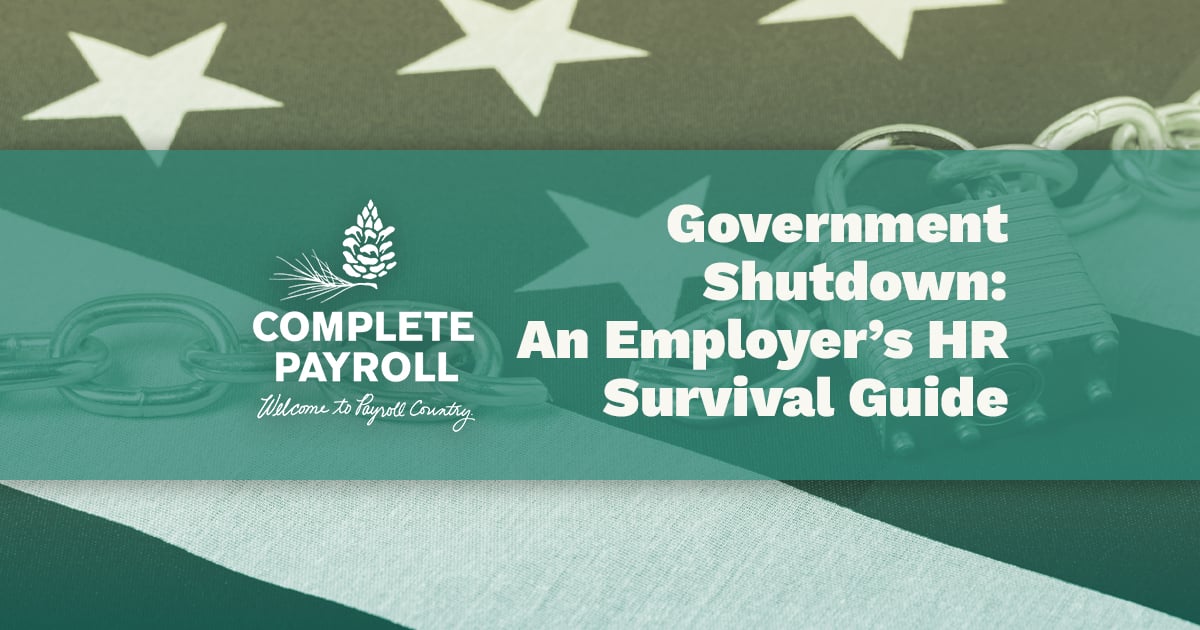
Most employees do a decent job. They show up, they do the work that’s meant for them, they make and fix occasional mistakes, and are generally pretty good. You also get a few superstars who are thriving at your business. That’s always exciting.
And then there are the others. The ones who are just failing, whether that’s at their work or their interpersonal relationships. They might be new and overwhelmed. They might be senior and jaded. But for whatever reason, things don’t seem to be working out. Should you be thinking about termination?
Maybe. But if you’re concerned that this might not be the right step to take (or at least not right now) there are some alternative actions you can take. Here are a few of your options as a manager.
Performance Improvement Plans
Performance Improvement Plans (also known as PIPs), are one of the most powerful tools in a manager’s toolbox. Unfortunately, many managers treat them as a rubber stamp on the road towards termination, but they can be so much more. Performance improvement plans require a frank conversation with your struggling employee, which isn’t always a terribly comfortable experience. This conversation should include:
- Your general concern about their performance.
- The specific ways in which they are failing to meet expectations. (It can also be nice to mention the ways in which they are meeting or exceeding your expectations as well. This may take some of the sting from the news.)
- The fact that their job is in jeopardy.
- The specific improvements that need to occur in order for them to keep their job.
- The time frame in which this needs to be accomplished (usually a few weeks).
All of this should be documented in writing and signed as well.
At this point, the most important part of the PIP is giving the employee the sincere opportunity to improve. Provide them with the time, materials, and feedback that they need to be successful. If they don’t seem to be interested in changing their behavior, document that and feel free to let them go before the end of the PIP. If they seem to be trying hard and failing anyway, termination or one of the other alternatives listed here is probably the best solution.
Demotions
Demotions can feel shameful to some employees but are a blessing to others. This is especially true of employees who were adequate or even excellent individual contributors who were promoted to management positions, only to flounder in their new role. Not all engineers are good project managers. Not all teachers of children should be curriculum coaches. There’s a chance that the opportunity to take up their old role again will be a huge burden lifted; feeling incompetent is a huge stressor.
There are complications, of course. If you replaced the employee in their old role, there may not be a job to return to. Or the available role might be different from the one that they left. Coworkers who have reported to the employee might feel uncomfortable with being peers. (For this reason, it can be helpful if the demoted employee can be placed in a different department, or even a different location.) And if the employee has made plans or major purchases based on a higher salary, a dramatic reduction can be a significant hardship.
Of course, there are some (many, even) employees who would prefer to resign than accept a demotion, which is a perfectly valid course of action as well.
Voluntary Resignation
While someone who willfully engages in misconduct absolutely deserves to be terminated, there are also many situations in which perfectly good, hard-working individuals find themselves in jobs they simply can’t do.
This isn’t because they misrepresented their skills when applying (that would fall under misconduct), but because the exact needs of the job weren’t presented very clearly to them, or the job changed over time, or their own situation (family, health, priorities) have changed. You need these people out of the job so that someone more capable can be assigned to the work. But neither do you want them to fail in the future. Voluntary resignation can be a better option.
This can work in a variety of ways, but here’s a general pathway to follow.
- Talk about it. Explain that you need someone else in their role, but also understand that they’ve done their best and would probably be successful in a (part time/lower volume/individual contributor/non-sales/whatever) role. Tell them that you’re offering them the opportunity to resign.
- Set a date. This can be immediate, but it might be to your mutual benefit to set a date a few weeks or even months out. This gives you time to find and train a replacement while your employee is job hunting and at least getting some work done.
- Support their job hunt. Offer to be a reference and give them time off to interview as needed. On providing references: don’t lie, but be honest about the employee’s strengths and weaknesses: they were good at basic tasks but struggled with technology, for example. Or they were great with close supervision but needed help with time management.
- Use your transition time wisely. If your employee’s work has been piling up, it’s especially important to document where the work is at and what needs to be done. Use the opportunity to think more critically about the qualities of your next hire as well.
- Stick to your agreement. Be firm with the date you set, whether or not your employee has secured a new job. If you agreed to provide severance pay, extend medical coverage, or be a reference, stick to that as well. Keep things civil and allow your employee to leave gracefully “to pursue other opportunities.”
Sometimes, none of these options work out.
In those cases, termination might be the best choice. Need help with that process? Download your copy of our NYS Employee Termination Kit.
For more information and insights into the laws, best practices and complexities around terminating employees, check out our resource page, A Complete Guide to Employee Terminations. It's an all-in-one page that includes thorough insights, instructions and plenty of links to other helpful resources.
Additionally, here are some other articles that focus on the difficult subject of terminating employees:
- How to Script Your Termination Meeting
- Can You Fire An Employee For Something They Did Outside of Work?
- Paying a Terminated Employee Their Last Paycheck
- About Leave of Absence Employee Terminations
- How to Address Alcohol in the Workplace
- How to Measure and Minimize Employee Turnover
- How to Handle an Employee That's Abusing Your Sick Leave Policy
- How to Terminate an Employee in New York State
- Can You Terminate An Employee On Leave?
- The Difference Between a Severance Package and a Severance Agreement
- 3 Exceptions to At-Will Employment
- How to Handle an Immediate Employee Termination
- Termination Meetings: Where and When to Conduct the Most Difficult Conversation
- Can You Terminate an Employee Over the Phone?
- Can You Fire An Employee For Something They Said Online?
- How to Inform Your Staff About a Terminated Employee
- When Should You Fire An Intern?
- Can You Fire An Independent Contractor?


















 Get Instant Blog Notifications
Get Instant Blog Notifications


%20Need%20to%20Know%20about%20the%20New%20I-9.jpg)